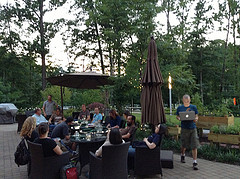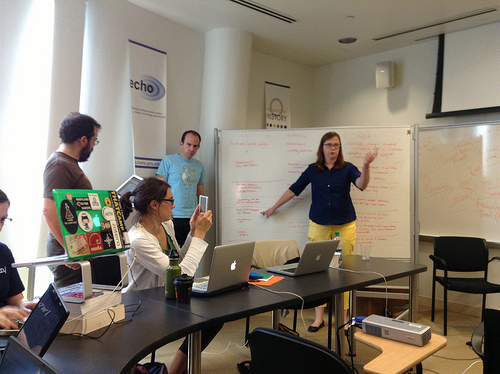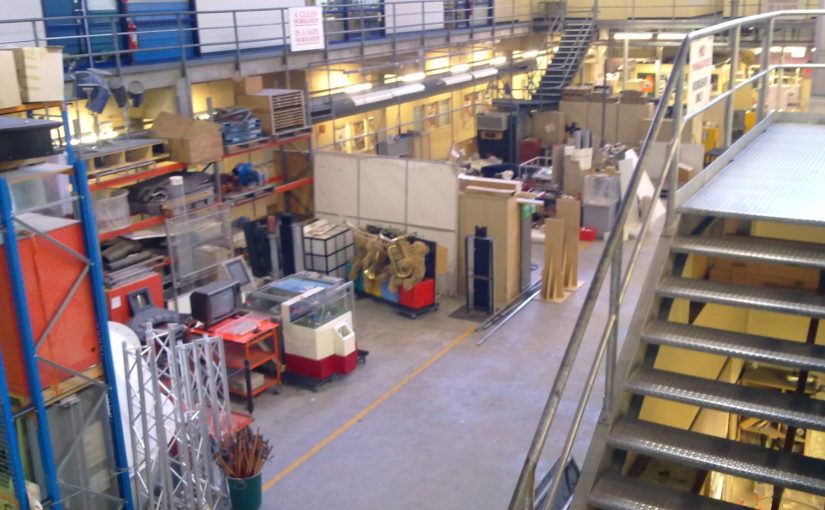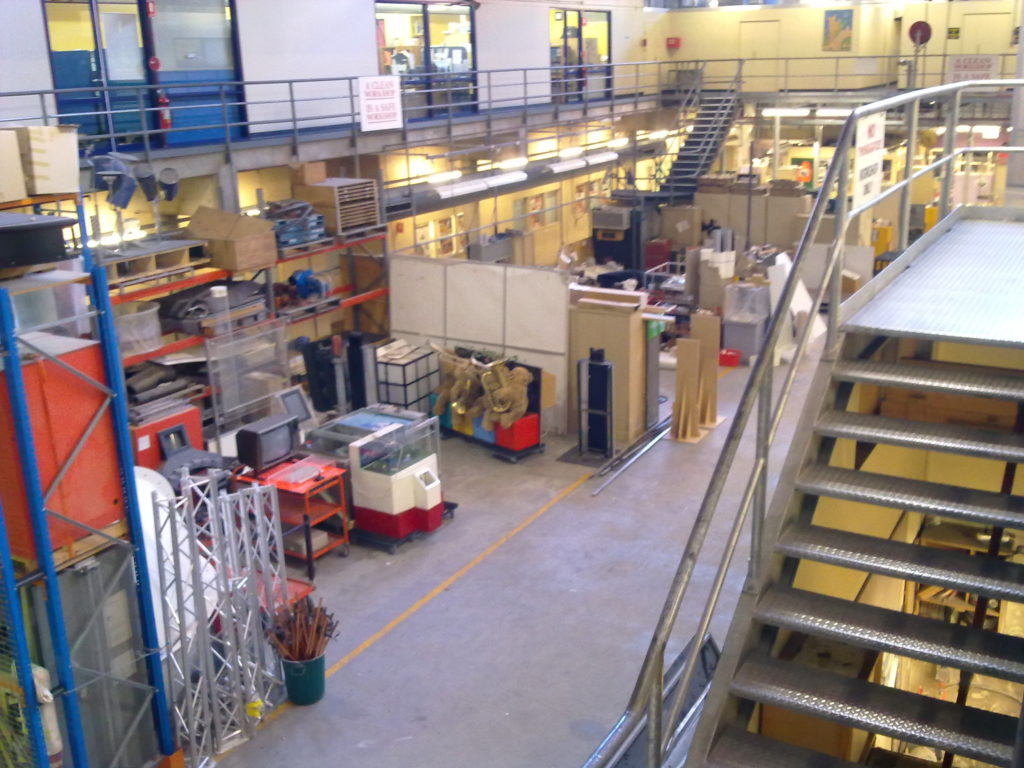Day two of One Week, One Tool. We know what we're making, but we're not yet revealing exactly what it is. (Is that mean? It's partly a way of us keeping things simple so we can focus on work.) Yesterday (see Working out what we're doing: day one of One Week, One Tool) already feels like weeks ago, and even this morning feels like a long time ago. I can see that my posts are going to get less articulate as the week goes on, assuming I keep posting. I'm not sure how much value this will have, but I suppose it's a record of how fast you can move in the right circumstances…
We spent the morning winnowing the ideas we'd put up for feedback on overnight down from c12 to 4, then 3, then 2, then… It's really hard killing your darlings, and it's also difficult choosing between ideas that sound equally challenging or fun or worthy. There was a moment when we literally wiped ideas that had been ruled out from the whiteboard, and it felt oddly momentous. In the end, the two final choices both felt like approaches to the same thing – perhaps because we'd talked about them for so long that they started to merge (consciously or not) or because they both fell into a sweet spot of being accessible to a wide audience and had something to do with discovering new things about your research (which was the last thing I tweeted before we made our decision and decided to keep things in-house for a while). Finally, eventually, we had enough of a critical mass behind one idea to call it the winner.
Personally, our decision only started to feel real as we walked back from lunch – our task was about to get real. It's daunting but exciting. Once back in the room, we discussed the chosen idea a bit more and I got a bit UX/analysty and sketched stuff on a whiteboard. I'm always a bit obsessed with sketching as a way to make sure everyone has a more concrete picture (or shared mental model) of what the group is talking about, and for me it also served as a quick test of the technical viability of the idea. CHNM's Tom Scheinfeldt then had the unenviable task of corralling/coaxing/guiding us into project management, dev/design and outreach teams. Meghan Frazer and Brian Croxall are project managing, I'm dev/design team lead, with Scott Kleinman, Rebecca Sutton Koeser, Amy Papaelias, Eli Rose, Amanda Visconti and Scott Williams (and in the hours since then I have discovered that they all rock and bring great skills to the mix), and Jack Dougherty is leading the outreach team of Ray Palin and Amrys Williams in their tasks of marketing, community development, project outreach, grant writing, documentation. Amrys and Ray are also acting as user advocates and they've all contributed user stories to help us clarify our goals. Lots of people will be floating between teams, chipping in where needed and helping manage communication between teams.
The Dev/Design team began with a skills audit so that we could figure out who could do what on the front- and back-end, which in turn fed into our platform decision (basically PHP or Python, Python won), then a quick list of initial tasks that would act as further reality checks on the tool and our platform choice. The team is generally working in pairs on parallel tasks so that we're always moving forward on the three main functional areas of the tool and to make merging updates on github simpler. We're also using existing JavaScript libraries and CSS grids to make the design process faster. I then popped over to the Outreach team to check in with the descriptions and potential user stories they were discussing. Meghan and Brian got everyone back together at the end of the day, and the dev/design team had a chance to feed back on the outreach team's work (which also provided a very ad hoc form of requirements elicitation but it started some important conversations that further shaped the tool). Then it was back over to the hotel lobby where we planned to have a dev/design team meeting before dinner, but when two of our team were kidnapped by a shuttle driver (well, sorta) we ended up working through some of the tasks for tomorrow. We're going to have agile-style stand-up meetings twice a day, with the aim to give people enough time to get stuck into tasks while still keeping an eye on progress with a forum to help deal with any barriers or issues. Some ideas will inevitably fall by the wayside, but because the OWOT project is designed to run over a year, we can put ideas on a wishlist for future funded development, leave as hooks for other developers to expand on, or revisit once we're back home. In hack day mode I tend to plan so that there's enough working code that you have something to launch, then go back and expand features in the code and polish the UX with any time left. Is this the right approach here? Time will tell.
#owot dev team is hard at work. #fb pic.twitter.com/Zj5PW0Kj2a
— Brian Croxall (@briancroxall) July 31, 2013



